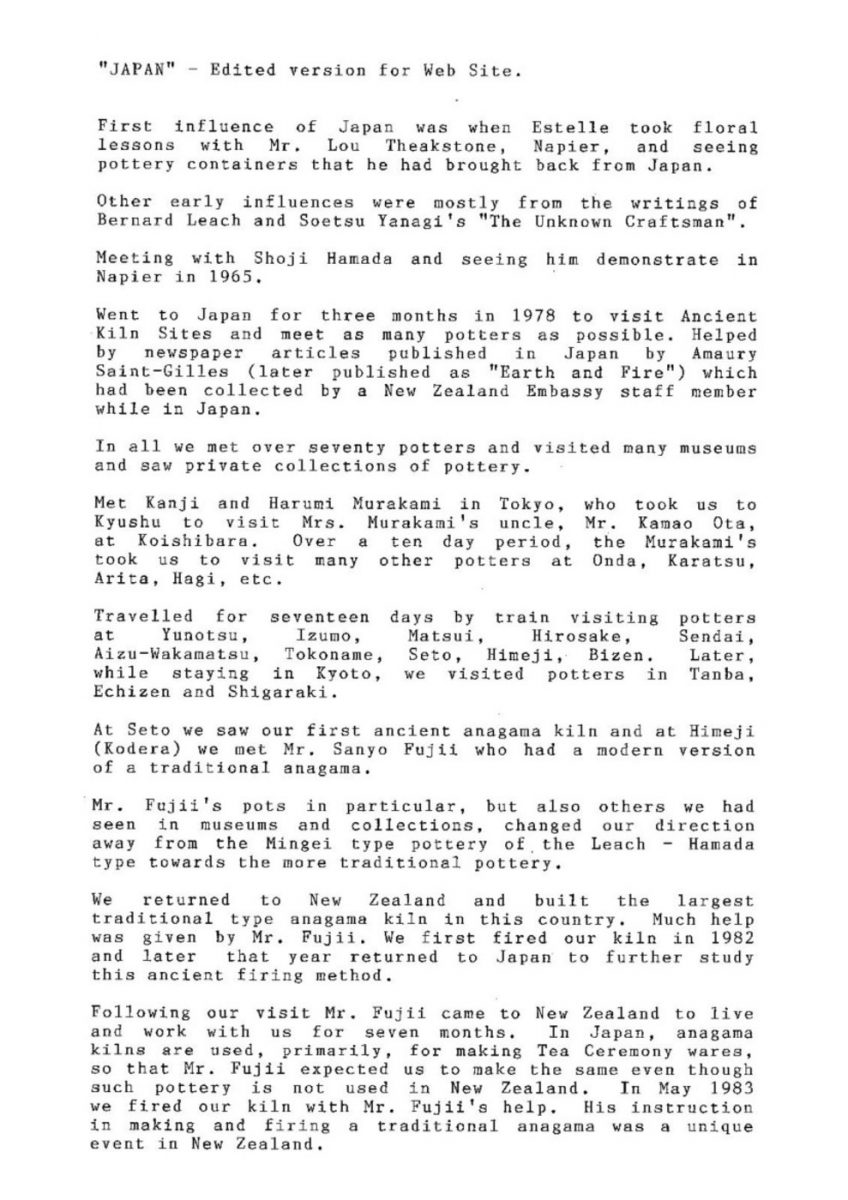“JAPAN” – Edited version for Web Site.
First influence of Japan was when Estelle took floral lessons with Mr. Lou Theakstone, Napier, and seeing pottery containers that he had brought back from Japan.
Other early influences were mostly from the writings of Bernard Leach and Soetsu Yanagi’s “The Unknown Craftsman”.
Meeting with Shoji Hamada and seeing him demonstrate in Napier in 1965.
Went to Japan for three months in 1978 to visit Ancient Kiln Sites and meet as many potters as possible. Helped by newspaper articles published in Japan by Amaury Saint-Gilles (later published as “Earth and Fire”) which had been collected by a New Zealand Embassy staff member while in Japan.
In all we met over seventy potters and visited many museums and saw private collections of pottery.
Met Kanji and Harumi Murakami in Tokyo, who took us to Kyushu to visit Mrs. Murakami’s uncle, Mr. Kamao Ota, at Koishibara. Over a ten day period, the Murakami’s took us to visit many other potters at Onda, Karatsu, Arita, Hagi, etc.
Travelled for seventeen days by train visiting potters at Yunotsu, Izumo, Matsui, Hirosake, Sendai, Aizu-Wakamatsu, Tokoname, Seto, Himeji, Bizen. Later, while staying in Kyoto, we visited potters in Tanba, Echizen and Shigaraki.
At Seto we saw our first ancient anagama kiln and at Himeji (Kodera) we met Mr. Sanyo Fujii who had a modern version of a traditional anagama.
Mr. Fujii’s pots in particular, but also others we had seen in museums and collections, changed our direction away from the Mingei type pottery of the Leach – Hamada type towards the more traditional pottery.
We returned to New Zealand and built the largest traditional type anagama kiln in this country. Much help was given by Mr. Fujii. We first fired our kiln in 1982 and later that year returned to Japan to further study this ancient firing method.
Following our visit Mr. Fujii came to New Zealand to live and work with us for seven months, In Japan, anagama kilns are used, primarily, for making Tea Ceremony wares, so that Mr. Fujii expected us to make the same even though such pottery is not used in New Zealand. In May 1983 we fired our kiln with Mr. Fujii’s help. His instruction in making and firing a traditional anagama was a unique event in New Zealand.
Cont . . .













Do you know something about this record?
Please note we cannot verify the accuracy of any information posted by the community.